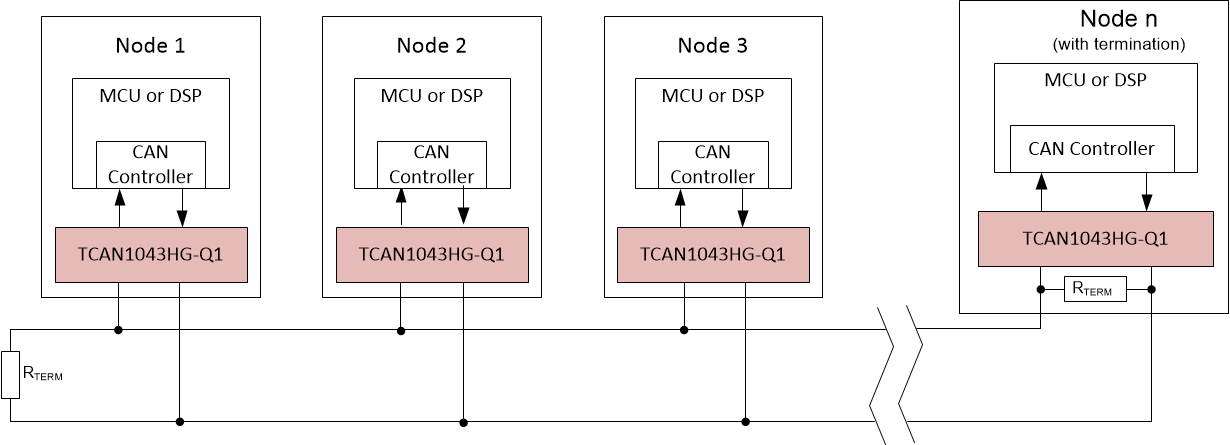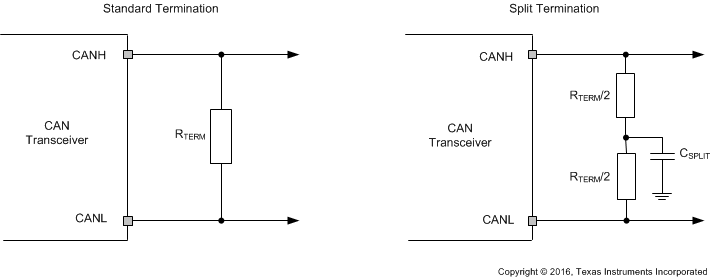ZHCSH19F November 2017 – November 2023 TCAN1043-Q1 , TCAN1043G-Q1 , TCAN1043H-Q1 , TCAN1043HG-Q1
PRODUCTION DATA
- 1
- 1 特性
- 2 应用
- 3 说明
- 4 Device Comparison Table
- 5 Pin Configuration and Functions
- 6 Specifications
- 7 Parameter Measurement Information
-
8 Detailed Description
- 8.1 Overview
- 8.2 Functional Block Diagram
- 8.3 Feature Description
- 8.4 Device Functional Modes
- 9 Application Information Disclaimer
- 10Device and Documentation Support
- 11Revision History
- 12Mechanical, Packaging, and Orderable Information
封装选项
机械数据 (封装 | 引脚)
散热焊盘机械数据 (封装 | 引脚)
- DMT|14
订购信息
9.2.2.1 CAN Termination
The ISO11898-2 standard specifies the interconnect to be a single twisted pair cable (shielded or unshielded) with 120 Ω characteristic impedance (ZO). Resistors equal to the characteristic impedance of the line can be used to terminate both ends of the cable to prevent signal reflections. Unterminated drop-lines (stubs) connecting nodes to the bus must be kept as short as possible to minimize signal reflections. The termination can be in a node but is generally not recommended, especially if the node can be removed from the bus. Termination must be carefully placed so that it is not removed from the bus. System level CAN implementations such as CANopen allow for different termination and cabling concepts for example to add cable length.
 Figure 9-3 Typical CAN Bus Application
Figure 9-3 Typical CAN Bus ApplicationTermination can be a single 120-Ω resistor at the ends of the bus, either on the cable or in a terminating node. If filtering and stabilization of the common mode voltage of the bus is desired then “split termination” can be used, see Figure 9-4. Split termination improves the electromagnetic emissions behavior of the network by eliminating fluctuations in the bus common mode voltage levels at the start and end of message transmissions.
 Figure 9-4 CAN Bus Termination Concepts
Figure 9-4 CAN Bus Termination Concepts